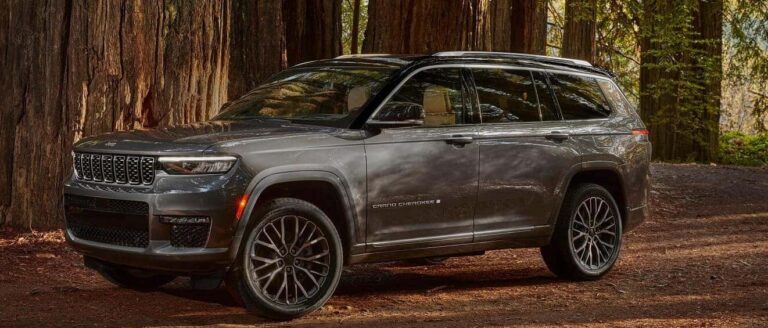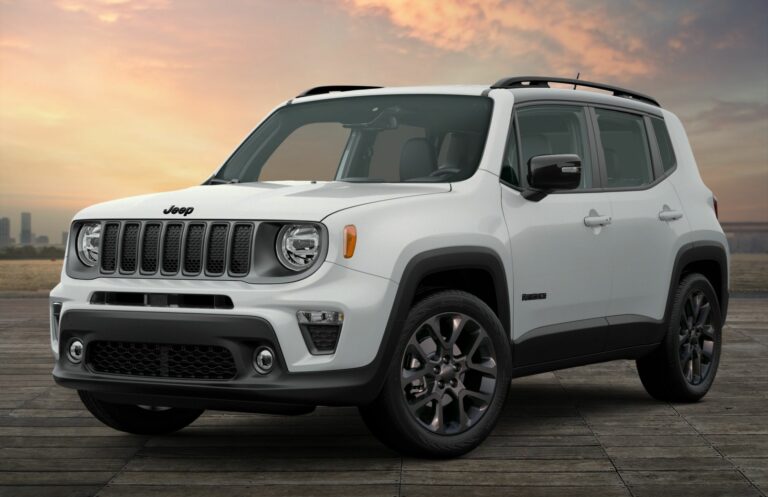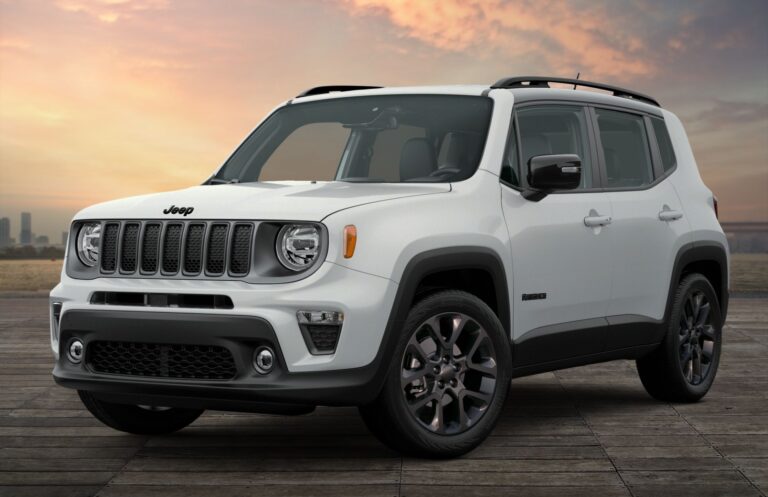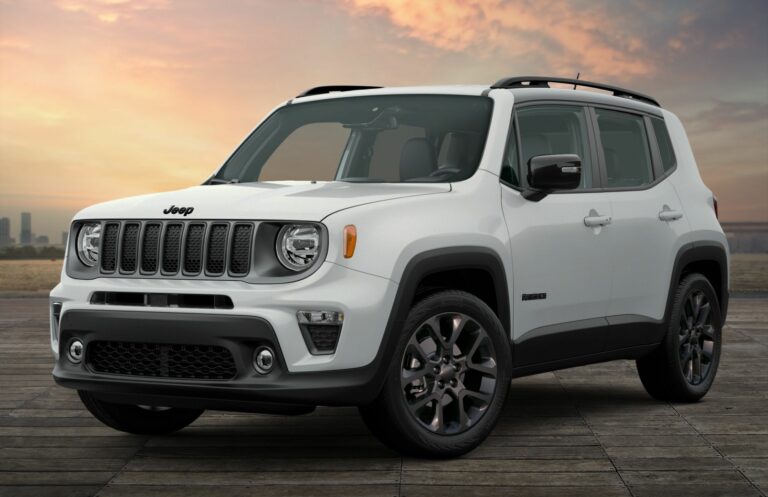Jeep Cherokee Lease Programs: Your Comprehensive Guide to Driving America’s Iconic SUV
Jeep Cherokee Lease Programs: Your Comprehensive Guide to Driving America’s Iconic SUV jeeps.truckstrend.com
The Jeep Cherokee, a name synonymous with adventure, capability, and rugged charm, has long captivated drivers seeking a versatile SUV that blends urban comfort with off-road prowess. While outright purchasing remains a popular option, Jeep Cherokee Lease Programs have emerged as an increasingly attractive pathway for many to experience the thrill of owning this iconic vehicle. Leasing offers a unique blend of flexibility, affordability, and access to the latest models, making it a compelling alternative for those who prefer to drive a new car more frequently without the long-term commitment of traditional financing.
This comprehensive guide delves deep into the world of Jeep Cherokee lease programs, demystifying the process and providing you with the knowledge needed to make an informed decision. Whether you’re a first-time leaser or looking to understand the nuances of the Jeep lease experience, this article will equip you with practical advice, essential considerations, and actionable insights to help you navigate the journey with confidence.
Jeep Cherokee Lease Programs: Your Comprehensive Guide to Driving America’s Iconic SUV
Understanding the Basics of a Jeep Cherokee Lease
At its core, leasing a Jeep Cherokee means you’re essentially renting the vehicle for a fixed period, typically 24, 36, or 48 months. Unlike purchasing, where you aim for eventual ownership, a lease allows you to use the vehicle for a set term and mileage, after which you return it or have other options. This fundamental difference drives the unique financial and practical benefits of leasing.
Key terms you’ll encounter in any lease agreement include:
- Capitalized Cost (Cap Cost): This is the agreed-upon price of the vehicle, similar to the selling price if you were buying it. Negotiating a lower cap cost is crucial, as it directly impacts your monthly payments.
- Residual Value: This is the estimated value of the vehicle at the end of the lease term. It’s determined by the leasing company and expressed as a percentage of the MSRP. A higher residual value means you pay less in depreciation over the lease term, leading to lower monthly payments.
- Money Factor: This is the interest rate equivalent for a lease, often expressed as a very small decimal (e.g., 0.00250). To convert it to an approximate annual percentage rate (APR), multiply it by 2400 (0.00250 x 2400 = 6% APR). A lower money factor means lower financing costs.
- Lease Term: The duration of your lease agreement, typically in months.
- Mileage Allowance: The maximum number of miles you’re permitted to drive during the lease term without incurring excess mileage charges. Common allowances are 10,000, 12,000, or 15,000 miles per year.
- Acquisition Fee: A fee charged by the leasing company for setting up the lease.
- Disposition Fee: A fee charged at the end of the lease to cover the cost of cleaning and reselling the vehicle, usually waived if you lease another vehicle from the same brand.


Your monthly lease payment is primarily calculated based on the difference between the capitalized cost and the residual value (the depreciation), plus the money factor (financing charge), taxes, and fees.
Why Lease a Jeep Cherokee? Benefits Explored
Leasing a Jeep Cherokee offers a compelling array of advantages that make it an attractive option for many drivers:
- Lower Monthly Payments: Compared to financing the purchase of a new Cherokee, lease payments are typically significantly lower because you’re only paying for the vehicle’s depreciation during your usage period, not its full purchase price.
- Access to New Models More Frequently: With lease terms usually ranging from 2-4 years, you can drive a new Jeep Cherokee with the latest technology, safety features, and design updates more often, avoiding the commitment of long-term ownership.
- Constant Warranty Coverage: Throughout the entire lease term, your Jeep Cherokee will likely remain under its factory warranty. This means less worry about unexpected repair costs, providing peace of mind.
- Less Hassle with Depreciation and Trade-in: When your lease ends, you simply return the vehicle (assuming it meets wear-and-tear guidelines and mileage limits). You don’t have to worry about the vehicle’s resale value or the complexities of selling or trading it in.
- Potentially Lower Sales Tax: In many states, sales tax on a lease is only applied to the monthly payments, not the full purchase price of the vehicle, leading to potential savings.
- Flexibility at Lease End: You have several options when your lease concludes: you can return the vehicle and walk away, purchase it at the predetermined residual value, or lease a brand-new Jeep or another vehicle.

The Jeep Cherokee Lineup: Which Trim to Lease?
The Jeep Cherokee has traditionally offered a diverse range of trims, each designed to cater to different preferences and needs, impacting the lease cost significantly. While the Cherokee lineup has evolved, common trims you might find available for lease include:
- Jeep Cherokee Latitude: Often the entry-level trim, offering essential features, comfortable interiors, and the fundamental Jeep experience. It’s a great starting point for those looking for the most affordable lease.
- Jeep Cherokee Latitude Lux: An upgrade from the Latitude, adding more premium features like leather-trimmed seats, power-adjustable driver’s seat, and a more robust infotainment system, balancing comfort with value.
- Jeep Cherokee Limited: A more upscale trim, providing a luxurious experience with advanced technology, enhanced interior materials, and additional comfort features. Leasing a Limited means enjoying a premium ride without the full purchase price commitment.
- Jeep Cherokee Trailhawk: The most off-road capable variant, featuring an advanced 4×4 system, increased ground clearance, off-road suspension, and unique styling. If your adventures take you off the beaten path, the Trailhawk is the ideal choice, and leasing allows you to experience its specialized capabilities without a long-term investment in a niche vehicle.
- Jeep Cherokee Overland: The pinnacle of luxury and refinement within the Cherokee lineup, offering top-tier amenities, sophisticated design, and a highly comfortable ride.
When considering which trim to lease, evaluate your lifestyle, desired features, and budget. A higher trim will naturally result in higher monthly lease payments due to a higher capitalized cost.
Navigating the Lease Process: A Step-by-Step Guide
Leasing a Jeep Cherokee can be a straightforward process if you follow these steps:
- Determine Your Needs and Budget: Before visiting a dealership, decide what trim level, features, and mileage allowance you need. Crucially, establish a comfortable monthly payment range.
- Research Available Lease Deals: Check Jeep’s official website, local dealership promotions, and third-party car sites for current lease offers on the Cherokee. These often include special incentives like lower money factors or lease cash.
- Check Your Credit Score: Your credit score significantly impacts your money factor. A higher score (typically 700+) will qualify you for the best rates. Get a free credit report to understand your standing.
- Visit Dealerships and Test Drive: Test drive your preferred Cherokee trims to ensure they meet your expectations. Engage with sales representatives to understand their current inventory and lease programs.
- Negotiate Key Lease Terms: This is where you can save money. Focus on negotiating:
- Capitalized Cost: Treat this like the selling price of a car you’re buying. Negotiate it down.
- Money Factor: Ask for the lowest possible money factor.
- Fees: Inquire about waiving or reducing acquisition fees.
- Understand Mileage Limits: Be realistic about your driving habits. Going over your allowance can be costly. If you anticipate driving more, negotiate a higher mileage allowance upfront, as it’s cheaper than paying penalties later.
- Consider Your Down Payment: A larger down payment (capitalized cost reduction) will lower your monthly payments but remember you lose this money if the car is totaled early in the lease. Many experts advise minimal or no down payment on leases.
- Review the Lease Agreement Thoroughly: Read every line of the contract. Understand all charges, terms, conditions, and end-of-lease obligations. Don’t rush this step.
- Secure Adequate Insurance: Leasing companies typically require higher liability and comprehensive/collision coverage than if you owned the car outright. Factor these costs into your budget.
Key Considerations and Important Factors
While leasing offers many benefits, it’s vital to be aware of certain aspects that can impact your experience:
- Mileage Limits: This is perhaps the most critical consideration. Exceeding your agreed-upon annual mileage will result in per-mile charges (e.g., $0.15 – $0.25 per mile) at lease end, which can quickly add up. If you’re a high-mileage driver, leasing might not be the most cost-effective option, or you’ll need to negotiate a higher allowance.
- Wear and Tear: Leasing agreements define "normal" vs. "excessive" wear and tear. Dings, dents, significant scratches, torn upholstery, or bald tires beyond what’s considered normal can incur charges at lease end. Regular maintenance and careful driving can mitigate these costs. Consider a pre-inspection from the leasing company before returning the vehicle.
- Early Termination: Breaking a lease early is almost always very expensive. The remaining depreciation, unpaid lease payments, and various fees can amount to thousands of dollars. Explore alternatives like lease transfer services or a dealership buyout if you need to get out of your lease prematurely.
- Maintenance: You are responsible for all routine maintenance (oil changes, tire rotations, etc.) as per the manufacturer’s recommendations during the lease term. Neglecting maintenance can result in charges for excessive wear and tear or void parts of the warranty.
- Lease-End Options: Know your choices well in advance. You can return the vehicle, purchase it at the residual value (if you love it and the buyout price is fair), extend the lease for a short period, or, most commonly, lease a new vehicle.
Tips for Securing the Best Jeep Cherokee Lease Deal
Getting a great lease deal requires savvy negotiation and timing. Here are some actionable tips:
- Shop Around: Don’t settle for the first offer. Contact multiple Jeep dealerships and compare their lease proposals for the same vehicle. Pit them against each other to drive down the price.
- Negotiate the Capitalized Cost (Selling Price): This is the most impactful negotiation point. Get the dealer to agree to the lowest possible "selling price" for the vehicle, even though you’re leasing.
- Understand the Money Factor: Ask for the money factor and if it’s negotiable. Sometimes, dealers mark up the money factor from the base rate offered by the leasing company.
- Look for Special Promotions: Jeep often runs regional or national lease incentives, such as "lease cash" (a rebate that reduces the capitalized cost) or promotional low money factors. These can significantly reduce your payments.
- Time Your Lease: The end of the month, quarter, or year can be good times to lease, as dealerships are often trying to meet sales quotas. Also, when a new model year is arriving, dealers are motivated to clear out current year inventory.
- Have Excellent Credit: A strong credit score is paramount. It gives you access to the lowest money factors and the best overall terms.
- Be Prepared to Walk Away: If a deal doesn’t feel right, be ready to leave. There’s always another dealership and another deal.
Potential Challenges and Solutions
While leasing is beneficial, certain challenges can arise. Here’s how to address them:
- Challenge: Unexpected Mileage Overages: You’ve driven more than anticipated.
- Solution: Monitor your mileage regularly. If you realize early on you’ll exceed the limit, consider contacting the leasing company to buy additional miles at a reduced rate upfront. Alternatively, if you’re close to the end, consider purchasing the vehicle at lease end if the residual value is favorable, as this nullifies mileage penalties.
- Challenge: Excessive Wear and Tear Charges: The dealership points out damage beyond normal wear.
- Solution: Conduct a self-inspection a few months before lease end. Fix minor issues yourself (e.g., small scratches, tire replacement if tread is low) or get professional detailing. Many leasing companies offer a complimentary pre-inspection to identify potential charges, giving you time to address them.
- Challenge: Need to Terminate Lease Early: Your circumstances change, and you can no longer afford or need the vehicle.
- Solution: Explore lease transfer services (like Swapalease or LeaseTrader) that connect you with someone willing to take over your lease. This can be complex but is often cheaper than direct early termination. Another option is to see if the dealership will buy out your lease, though this is less common if you’re not getting another vehicle from them.
- Challenge: Poor Credit Score: You’re having trouble getting approved for a good lease rate.
- Solution: You might face a higher money factor or require a larger down payment. Consider a co-signer with good credit to help secure better terms. Work on improving your credit score before applying for a lease.
Jeep Cherokee Lease Programs: Example Price Table
Please note that these figures are illustrative examples only and are subject to significant variation based on your location, credit score, current manufacturer incentives, dealership specific deals, chosen options, and the exact model year. Lease programs are highly dynamic.
| Jeep Cherokee Trim | Approximate MSRP (Base) | Example Down Payment | Example Monthly Payment (36 months) | Mileage Allowance (Annual) | Notes |
|---|---|---|---|---|---|
| Latitude FWD | $30,000 | $2,500 | $329 – $379 | 10,000 miles | Entry-level, great value |
| Latitude Lux 4×4 | $34,000 | $2,500 | $379 – $429 | 12,000 miles | Popular choice, balanced features |
| Limited 4×4 | $38,000 | $3,000 | $449 – $499 | 12,000 miles | Premium features, comfortable ride |
| Trailhawk 4×4 | $42,000 | $3,500 | $499 – $559 | 10,000 miles | Off-road specialized, higher residual |
Disclaimer:
- MSRP: Manufacturer’s Suggested Retail Price, varies with options.
- Down Payment: Includes first month’s payment, acquisition fee, and capital cost reduction. Zero down payment leases are possible but result in higher monthly payments.
- Monthly Payment: Excludes local taxes, registration, and potential additional fees.
- Mileage Allowance: Higher mileage allowances (e.g., 15,000 miles/year) will result in higher monthly payments.
- Credit Score: Assumes excellent credit (Tier 1 or Tier 1+). Lower scores will lead to higher money factors and thus higher monthly payments.
- Incentives: These examples do not factor in specific manufacturer lease cash or other promotional incentives that could significantly lower payments. Always ask about current offers!
Frequently Asked Questions (FAQ) about Jeep Cherokee Lease Programs
Q1: Can I negotiate the price of a leased Jeep Cherokee?
A1: Absolutely! You can and should negotiate the "capitalized cost" of the vehicle, which is essentially the selling price. A lower capitalized cost directly translates to lower monthly payments.
Q2: What happens if I go over my mileage limit?
A2: You will incur excess mileage charges, typically ranging from $0.15 to $0.25 per mile, at the end of your lease. It’s often cheaper to purchase additional miles upfront if you anticipate exceeding your limit.
Q3: Can I buy my leased Jeep Cherokee at the end of the term?
A3: Yes, you have the option to purchase the vehicle at a pre-determined price called the "residual value" (plus any applicable fees and taxes). This price is outlined in your lease agreement.
Q4: What is a "money factor" and how does it relate to interest rates?
A4: The money factor is the financing charge on a lease. To get an approximate annual interest rate (APR), multiply the money factor by 2400. For example, a money factor of 0.00250 is roughly equivalent to a 6% APR.
Q5: Is insurance more expensive on a leased car?
A5: Often, yes. Leasing companies typically require higher liability coverage, as well as comprehensive and collision coverage, to protect their asset. This can lead to higher insurance premiums compared to what you might choose for a vehicle you own outright.
Q6: What is considered "excessive wear and tear"?
A6: This varies by lease agreement, but generally includes damage beyond normal use, such as large dents, deep scratches, cracked glass, significant upholstery tears, non-factory modifications, or tires with insufficient tread. Minor dings and normal interior wear are usually acceptable.
Q7: Can I transfer my Jeep Cherokee lease to another person?
A7: In many cases, yes. Lease transfer services (e.g., Swapalease, LeaseTrader) facilitate this process, allowing someone else to take over your remaining lease payments and obligations. However, the original lessee may remain secondarily liable in some agreements.
Conclusion
Jeep Cherokee Lease Programs offer a compelling and flexible way to get behind the wheel of this legendary SUV. By understanding the core components of a lease, the benefits it offers, and the critical considerations involved, you can make an informed decision that aligns with your financial goals and lifestyle. The ability to drive a new vehicle with lower monthly payments, constant warranty coverage, and the flexibility to upgrade frequently makes leasing an attractive option for many.
While navigating mileage limits and wear-and-tear guidelines requires diligence, the convenience of returning a vehicle without the burden of resale can be invaluable. For those who appreciate the modern features and iconic capability of the Jeep Cherokee but prefer not to commit to long-term ownership, a lease program provides the perfect solution. Embrace the adventure, and drive your Jeep Cherokee with confidence and financial peace of mind.





